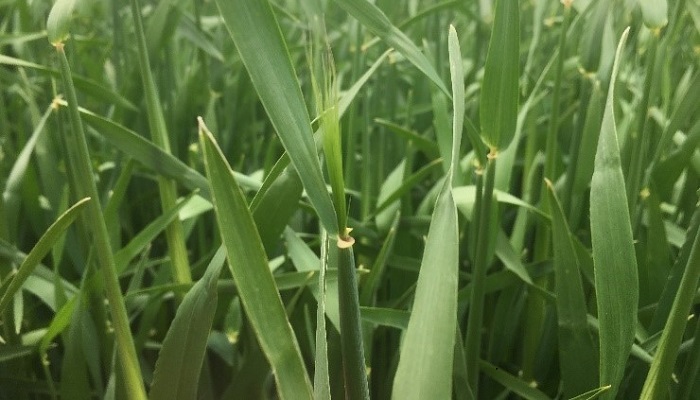12 October 2023
Attention turns to autumn planting

With the 2023 harvest now confined to memory except for a few late crops, attention has turned to planting winter crops, writes Shay Phelan,
Crops and Potato Specialist.
September weather has delayed the progress of many of the early drillers so some of the larger growers or those using reduced cultivation systems are already playing catch-up.
The wet harvest has also thrown up problems for growers in terms of baling straw, sowing catch crops and completing stubble cultivations.
However, there is another hidden problem that has emerged for fields intended for winter crops, and that is compaction. Many fields have areas that were compacted by trailers and/or combines during the harvest and will perform poorly unless action is taken. For some, this may mean an extra pass of a cultivator to lift the ground. However, this can only be done if the soils are dry; otherwise, you may only make the problem worse by creating a compaction layer further down in the soil profile.
Those who use plough-based systems may think that the plough will sort out the problem, but that may not be the case. In many situations we have seen compaction at the plough depth, which can also be difficult to remove. All farmers should dig a soil pit this year in areas where they think there may be some issues and see what level of damage is underneath the soil surface.
Variety choice
Looking at the recently published recommended lists, there are a few points to note. In winter barley, there is plenty of choice between two-row, six-row and six-row hybrids, all with their own advantages and disadvantages. When deciding on a variety, yield is often the deciding factor, but straw strength and the disease resistance profile can often add hidden costs that can be more important than the yield rating. KWS Tardis will again be the most popular variety this year as it has a good overall package. The performance of Casting, Cassia and Infinity were mixed this year so some growers will look to the new two-row Bordeaux, which has been provisionally recommended this year. In terms of six-row hybrids, Belfry and SY Armadillo are both available, while KWS Joyau (six-row) and Molly (two-row) have barley yellow dwarf virus (BYDV) tolerance/resistance for those who are worried about aphid damage.
This year the choice of good wheat varieties is very limited. Costello is no longer recommended and there are no new varieties being provisionally recommended, which means that variety choice is limited to Graham, JB Diego, Dawsum, Spearhead and Torp. Graham, JB Diego and Torp are susceptible to yellow rust, so bear in mind that you may have to use an early T0 to control this next spring if you decide to drill them, and the choice of fungicides to control it is limited. Spearhead is susceptible to sprouting, while Torp is susceptible to fusarium.
In oats, the story is the same as last year, with Isabel and Husky being the only two varieties available. Husky is slightly better yielding but Isabel has better grain quality characteristics, although both are susceptible to mildew and crown rust.
Seed rates
Table 1 shows the seed rate at different thousand grain weights (TGWs) for both wheat and barley. Grain quality was a significant problem in many crops harvested in 2023, so expect the TGW to be different to last year. Be aware that there will be variations between different batches, so adjust seed rates accordingly. Given the recent wet weather in September, many soils have no soil moisture deficit, so soil conditions may be less than ideal at sowing. This will reduce percentage establishment and should also be taken into account. Be aware that six-row hybrid barleys are sown at lower rates (200-240 seeds/m2) compared to other barley varieties.
Table 1: Seed rates at different thousand grain weights for wheat and barley
|
Planting date |
October week 1 |
October week 2 |
October week 3 |
October week 4 |
||||
|
|
||||||||
|
|
Barley |
Wheat |
Barley |
Wheat |
Barley |
Wheat |
Barley |
Wheat |
|
Target plants m² |
280 |
250 |
290 |
260 |
300 |
270 |
310 |
280 |
|
Sowing seeds m² |
350 |
313 |
387 |
347 |
400 |
360 |
443 |
400 |
|
% establishment |
80% |
75% |
75% |
70% |
||||
|
TGW |
Seed rate kg/ha* |
|
|
|
||||
|
45 |
158 |
141 |
174 |
156 |
180 |
163 |
199 |
181 |
|
46 |
161 |
144 |
178 |
159 |
184 |
166 |
204 |
184 |
|
47 |
165 |
147 |
182 |
163 |
188 |
169 |
208 |
188 |
|
48 |
168 |
150 |
186 |
166 |
192 |
173 |
213 |
192 |
|
49 |
172 |
153 |
189 |
170 |
196 |
176 |
217 |
196 |
|
50 |
175 |
156 |
193 |
173 |
200 |
180 |
221 |
200 |
|
51 |
179 |
159 |
197 |
177 |
204 |
184 |
226 |
204 |
|
52 |
182 |
163 |
201 |
180 |
208 |
187 |
230 |
208 |
|
53 |
186 |
166 |
205 |
184 |
212 |
191 |
235 |
212 |
|
54 |
189 |
169 |
209 |
187 |
216 |
194 |
239 |
216 |
|
55 |
193 |
172 |
213 |
191 |
220 |
198 |
244 |
220 |
To convert kg/ha to stones/ac, multiply kg/ha by 0.064.
Read the full Teagasc Tillage Newsletter
